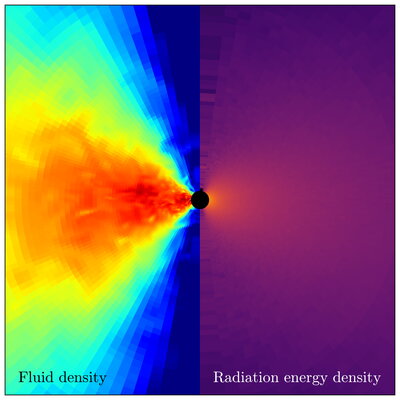
Theoretical astrophysicists utilize mathematical or numerical models to probe the astrophysical processes to provide insight into the today's most important problems and place observations into context.
Research Highlights

High-Energy Messengers: Cosmic Rays, Gamma Rays, and Neutrinos
The most violent environments in the cosmos give rise to the most energetic particles in nature. Illinois theorists use the highest energy photons (gamma rays), protons and nuclei (cosmic rays), and ghostly neutrinos, together to probe physics at the extremes--from supernova explosions to supermassive black hole jets to galaxy clusters. In turn, the interactions of these particles with their environments determine the conditions for star and planet formation, and for the evolution of interstellar matter and galaxy evolution.
Links to research groups and facilities: Charles Gammie, Brian Fields, Paul Ricker

General relativistic radiation magnetohydrodynamics : Black Hole Accretion
Many faculty utilize magnetohydrodynamics to understand physical systems. For example, the temperatures of disks around slowly accreting black holes are set by the balance of turbulent heating, advection, and radiative cooling. In particular, Compton scattering globally couples the disk thermodynamics through the radiative transfer equation. To model these systems, we have developed a numerical method for frequency-dependent general relativistic radiation magnetohydrodynamics (GRRMHD) with Monte Carlo transport. The simulation pictured was performed on the stampede2 supercomputer, an NSF-supported XSEDE resource.
Links to research groups and facilities: Charles Gammie, XSEDE

N-Body Simulations: Dark matter in distant galaxies
Despite decades of study, the nature of dark matter in the universe remains unknown. A new route to exploring its properties is to study the fine-scale structure of the gravitational potentials of distant galaxies. Researchers at Illinois are working on all aspects of this problem: developing new models for dark matter, running massively parallel N-body simulations to determine the resulting fine-scale structure for these new models, and developing new algorithms for analysis of the large observational data sets.
Links to research groups and facilities: Gil Holder, XSEDE, Blue Waters
Faculty working in Theory








